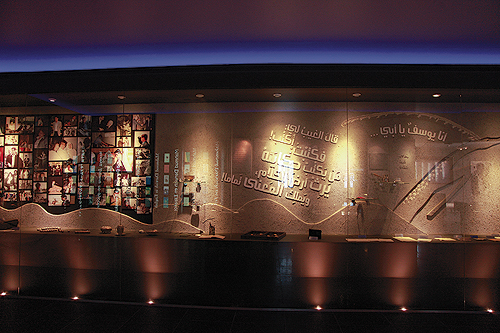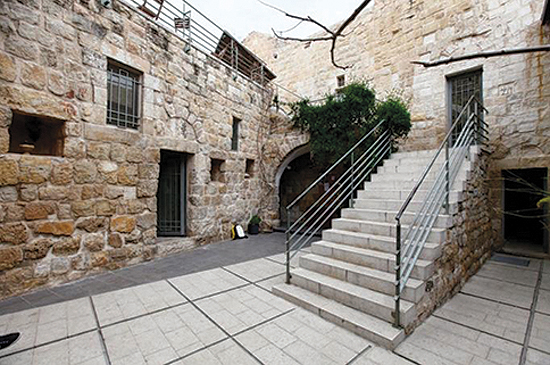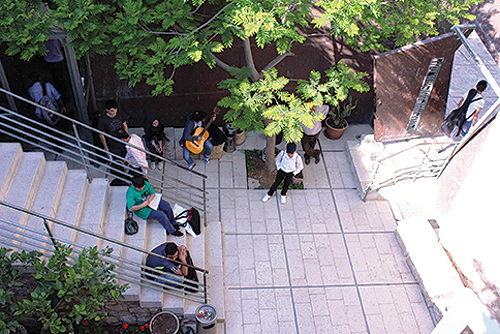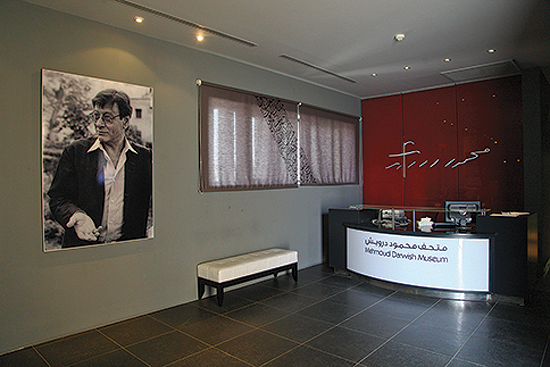Courtesy of VisitPalestine.ps
Ramallah was once a small rural town and a summer destination where many Palestinians enjoyed the pleasant Mediterranean climate and picturesque location in the highlands. Today, Ramallah’s old architecture can still be seen in some places, often hidden among the new, tall buildings. Ramallah has grown into an extensive modern city – a place that has a lot to offer in terms of cultural activities, restaurants, and nightlife.

Ramallah is home to various museums, cultural centers, and organizations, among which is Al-Kamandjati Association, a nonprofit organization established in 2002 with the aim to make music more accessible to various Palestinian communities. One of its music schools – Al-Kamandjati Music Center – is located in a beautifully renovated and restored building, which dates back to Ottoman times and is located in Ramallah’s Old City. Children from that area are its primary beneficiaries, and now they can enjoy this space with its unique design that encourages creativity. The building combines the classical beauty of the old architecture with modern elements such as an asymmetrical entrance-gate and wide windows made of mirrored glass.

Another interesting place in Ramallah’s old quarter is the Ramallah Museum. The museum building once belonged to the Zaro family, natives of the city. The three-story house includes the ground floor, which was constructed in nineteenth century, and two upper floors that were added at the beginning of the twentieth century. Today the restored building contains exhibition halls with interesting archaeological artifacts, a lecture room, a library, and a mosaic laboratory. The museum is open to the public from Sunday till Thursday (9:00am to 3:00pm).

Just next to the Ramallah Museum can be found a historic Dar Zahran Heritage Building that was built 250 years ago by the Ramallah family Dar Zahran Jaghab. It served as a family home, guest chamber, and the place of residence of Ramallah’s mukhtar (town head). The descendants of the family have turned the ancient building into a must-visit heritage place that includes an art gallery, a photo gallery of Ramallah from 1850 to 1979, and a fair-trade corner.
Ramallah also hosts some impressive, newly constructed museums that commemorate Palestine’s noble personalities. The Mahmoud Darwish Museum, which is built around the poet’s tomb, was opened to the public in 2012, on the fourth anniversary of his death. The splendid complex also includes a rich collection of Darwish’s personal belongings alongside a wide array of his original manuscripts. In addition to the museum there is a multipurpose hall, an outdoor theater designed to host more than five hundred people, and a beautiful garden, called Al-Birweh after the name of poet’s birthplace.

In November 2016, the long-awaited Yasser Arafat Museum was opened. Located on the grounds of Al-Muqataa (the presidential compound), just behind Arafat’s mausoleum and memorial, the museum was inaugurated around the twelfth anniversary of the Palestinian leader’s death. It documents key events in his life and exhibits personal items, including his pistol, his kaffiyeh (headscarf), and his Palestinian passport. The museum also contains a specialized library and gallery space for archives, exhibitions, and conferences.
To learn more about Ramallah and other interesting destinations, visit our website at www.visitpalestine.ps, or contact the Visit Palestine Information Center in Bethlehem via info@visitpalestine.ps or (02) 277-1992.

